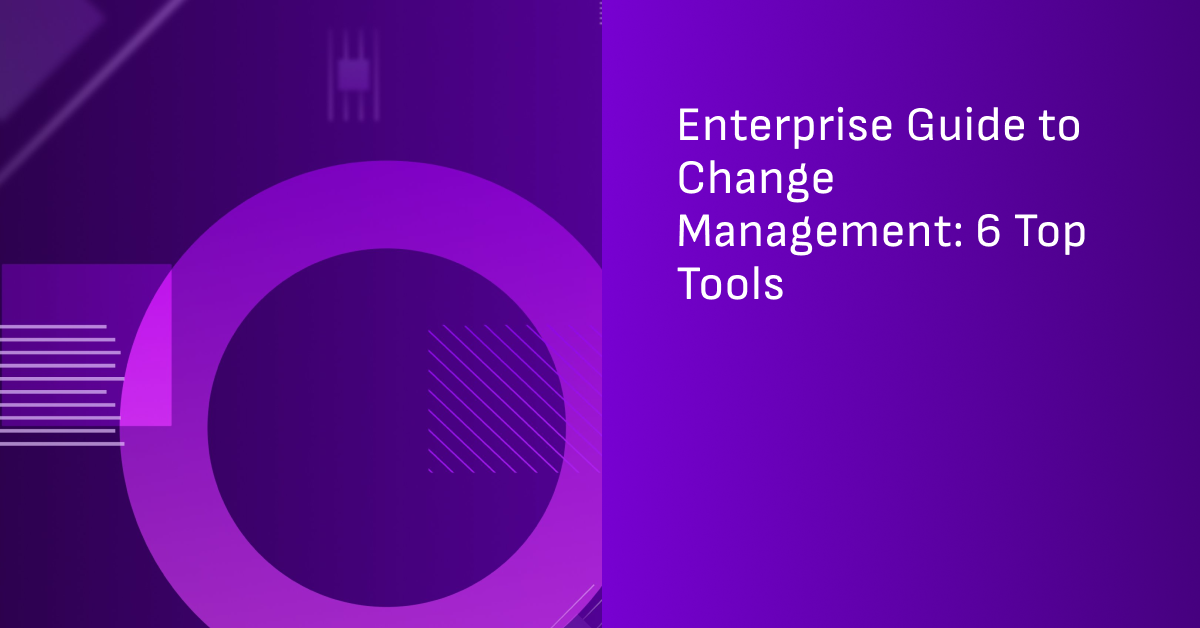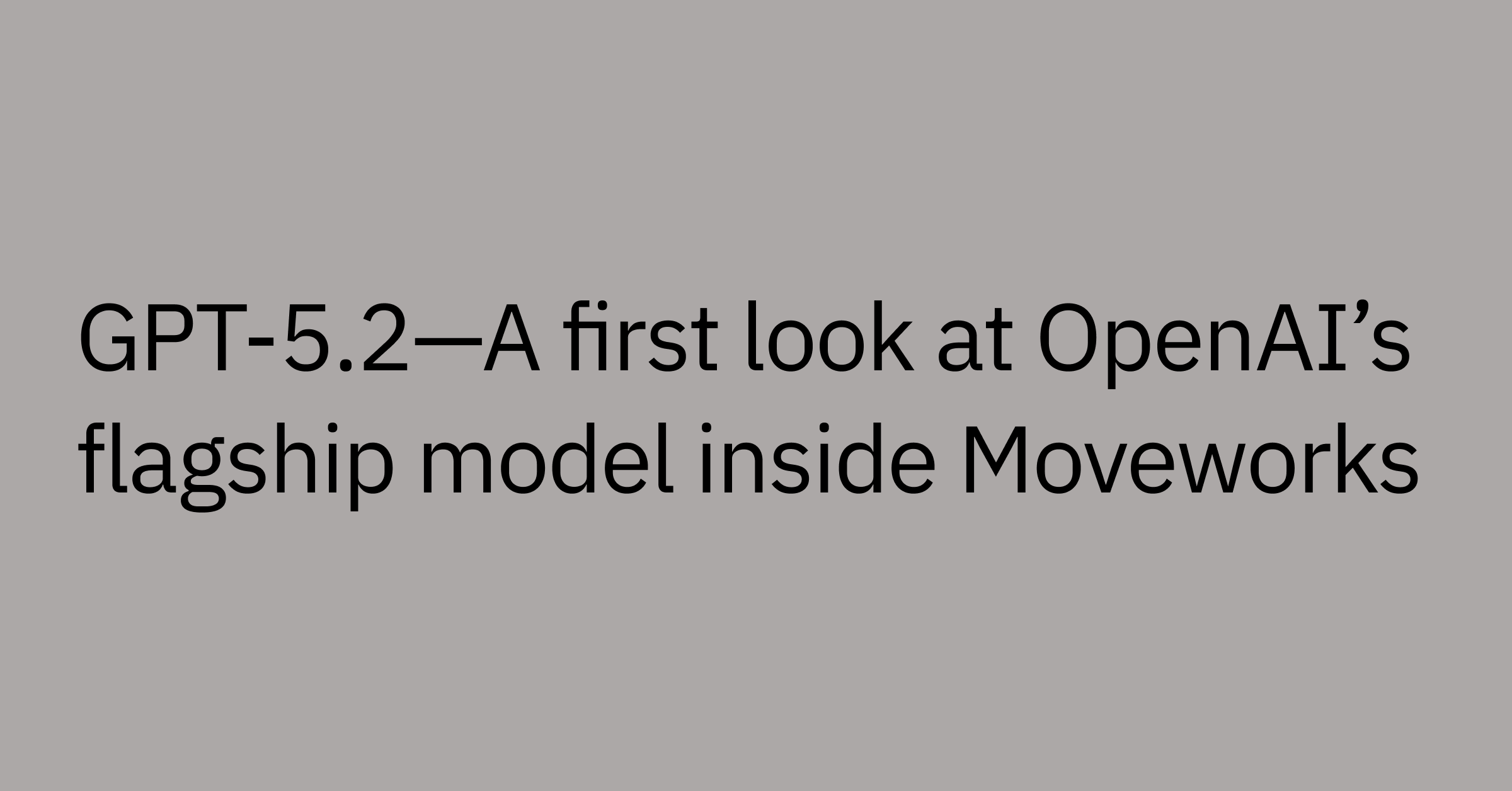Table of contents
Highlights
- Change management software standardizes how enterprises plan, approve, and track IT changes across interconnected systems.
- Top platforms like Jira Service Management, Freshservice, and BMC Helix provide governance, automation, and analytics.
- Modern “change enablement” approaches prioritize agility, minimizing disruption while accelerating delivery.
- AI chanage management capabilities such as risk modeling, automation, and employee notifications enhance transparency and reduce downtime.
- Moveworks integrates with change management tools to accelerate change approvals, improve coordination, and surface real-time insights.
When a major IT system upgrade or deployment goes off track, the consequences can ripple across your organization — from security vulnerabilities to lost productivity, stakeholder frustration, and revenue loss.
A report from Siemens estimates that the world’s 500 biggest companies lost 11% of their annual revenue in 2024 due to unplanned downtime.
Most enterprises already follow structured change processes, often based on frameworks like ITIL. But in today’s fast-moving, cloud-first environments, those traditional, rigid workflows can struggle to keep up.
Managing change at scale — across hybrid systems, distributed teams, and evolving compliance needs — requires a more dynamic and proactive approach.
That’s where change management software comes in. These tools help you manage the entire lifecycle of IT changes, from capturing requests to gaining approvals, coordinating implementation, and monitoring impact.
They are able to provide automation, built-in governance, and visibility into every phase of the process — helping:
- Avoid disruption
- Support collaboration
- Align each change with organizational goals
At a glance: The best change management tools
Here’s a quick look at top-rated platforms, including their ideal use cases and standout features.
Name of tool | Ideal use case | Top features |
Jira Service Management | Enterprises with more developed IT operations that want stronger collaboration between DevOps and ITSM teams |
|
SysAid | Mid-sized enterprises wanting a straightforward solution that isn’t too complex or expensive |
|
Freshservice | Fast-growing companies that need a quick-to-deploy solution with high ROI |
|
BMC Helix ITSM | Large enterprises in highly regulated industries that need advanced automation for complex IT environments |
|
Ivanti Neurons for ITSM | Midsize to large enterprises that need a high level of automation for proactive risk change identification |
|
Whatfix | Enterprises focused on employee adoption and training during change rollouts |
|
What is change management in ITSM?
Change management in IT service management (ITSM) is a formalized process for controlling how IT systems evolve over time — minimizing risk and preventing disruption, and maintaining service quality. It provides structure for introducing changes, whether it’s a new application rollout, a system upgrade, or a configuration tweak, while ensuring alignment with business priorities.
This process involves reviewing, approving, and documenting changes. The goal: reduce incidents caused by poorly managed changes and ensure updates support both technical stability and organizational strategy.
Effective change management is critical for scaling your IT operations without compromising performance. It helps enterprise IT leaders:
- Maintain service continuity
- Reduce friction across teams
- Make informed decisions backed by governance and risk management frameworks like ITIL
IT change management process
There are several key steps that go into a standardized change management workflow, and each one plays a crucial role in organizational change, helping you reach ideal business outcomes.
- Change request
The first step is submitting a change request, which outlines details like the scope of work, impact of the change, and why it’s needed.
Say an organization wants to migrate its on-prem customer relationship management (CRM) system to the cloud. A change request might include the potential benefits of this move and what it would take to do it.
- Change request review
Next, your IT team reviews the request to assess its feasibility and risk. The change is then classified as standard (pre-approved, low-risk changes), normal (requires full assessment and approval), or emergency (needs immediate implementation to fix critical issues).
For the example migration, the team would likely look at risks, complexity, and classify it as a normal change.
- Change plan
The project lead designs a change plan — in this case, a migration plan — that details the project’s key phases, resource allocation, and communication expectations. The plan should include a fallback or rollback strategy in case the change causes issues.
- Stakeholder communication
It’s important to proactively notify all impacted users, departments, and leadership about the upcoming change. This helps ensure alignment, minimize confusion, and manage expectations.
- Change approval
A change advisory board (CAB) made up of members from IT, compliance, and other stakeholder departments reviews, modifies, or approves the change plan.
For instance, the CAB might request additional safeguards be added to the migration plan to ensure data security.
- Change implementation
Once approved, the IT team strategically puts the plan into action. The change is carefully executed, monitored, and documented to ensure alignment with the plan and minimize risk.
- Change closure
After implementation, your team will conduct a post-implementation review to evaluate whether the change met its goals.
For the CRM migration, this might involve confirming that no critical data was lost, that workflows are running correctly and that downtime was minimal. Success metrics like system performance, user satisfaction, and support ticket volume can help assess the change’s impact.
When this entire process is well executed, change management helps your organization retain control and visibility end to end — ensuring changes are delivered smoothly, securely, and with minimal disruption.
Change enablement: Shifting the ITSM mindset
Change management in IT is largely based on IT infrastructure library (ITIL) best practices. The release of ITIL 4 in 2019, introduced a more flexible, value-driven approach versus earlier ITIL practices. ITIL 4 moved away from rigid processes toward adaptable practices that prioritize collaboration and rapid delivery, shifting from change management to change enablement.
Change enablement reframes change as something that can be facilitated and empowered rather than just controlled. This is a good thing, as this approach can help enterprises scale more quickly and innovate more freely, while still minimizing risk and maintaining stability.
By adopting change enablement, organizations can promote agility and speed across IT service management, all while ensuring governance and compliance are still in place.
Why your change management tools need to evolve, too
This mindset shift from 'controlling' change to 'enabling' it also changes what IT teams should expect from their tools.
To support enablement, change management software should be agile, data-driven, and flexible. The best platforms use AI, automation, and integrations to help teams execute changes faster and more intelligently — without needing to sacrifice control.
A good change management platform should support you through every step of the change lifecycle, helping with tasks like:
- Performing risk assessments
- Communicating across team and stakeholders
- Evaluating impact in real time
- Streamlining approvals and documentation
Most IT teams typically use dedicated change management software or ITSM platforms to handle the process. These tools generally offer features like workflow automation, monitoring and analytics, and approval management.
But increasingly, teams are also integrating communication and collaboration tools, such as Slack, Microsoft Teams, and AI assistants, to keep communication transparent and responsive throughout the change process.
What a change management solution should accomplish
A modern change management platform should include advanced functionalities that help you stay quick, agile, and innovative while maintaining governance and control.
Look for key features like:
- Automated workflows
- Integrations with existing systems
- Customization options
- Real-time analytics and reporting
- Built-in collaboration features
- Risk management and compliance controls
The best change management tools help your organizations adapt to change quickly and confidently — even as needs grow more complex.
Change management vs. change enablement
Here’s a quick comparison to highlight how the two approaches differ:
Change management | Change enablement |
Controls change | Facilitates change |
Limits visibility | Provides real-time insights |
Tools emphasize compliance and control | Tools emphasize analytics, enablement, and flexibility |
6 enterprise change management solutions
Here, we’re breaking down seven of the top change management software platforms designed for enterprise organizations. Take a look at our overview of each tool’s best use case, core capabilities, and how it supports modern ITSM priorities — so you can make the best choice for your needs.
1. Jira Service Management — Centralize IT and DevOps to minimize risk
Owned by Atlassian, Jira Service Management is an AI-powered platform that connects your development, IT, and business teams all in one place. The flexible system can help you automate low-risk changes and appropriately escalate high-risk ones.
It’s often used in industries like tech and financial services, where scalability, agility, and governance are chief priorities.
Top features:
- Change management with risk scoring
- Self-service employee knowledge base
- Native DevOps integrations
Ideal use case: Jira Service Management is a good fit for enterprises with more developed IT operations that want stronger collaboration between DevOps and ITSM.
2. SysAid — Align changes with strategic business goals
SysAid’s ITSM software helps IT teams handle incidents, requests, and changes effectively. With generative AI and native ITIL capabilities, SysAid simplifies change workflows and helps introduce standardized change procedures to boost overall efficiency.
Top features:
- ITIL change management
- Low-code workflow customization
- Change calendar with impact analysis
Ideal use case: SysAid is best for growing, mid-sized enterprises in search of a straightforward solution that doesn’t carry the complexity or cost of larger platforms.
3. Freshservice — Improve change management efficiency
Freshservice (developed by Freshworks) is a cloud-based IT service management platform that focuses on simplicity and speed.
The interface is user-friendly, and the automation is low-code, making it a good fit for companies with limited IT resources. Freshservice also has built-in support for ITIL processes, so you can structure and track changes in IT environments.
Top features:
- AI-powered automation and suggestions
- Real-time analytics and reporting
- IT modernization
Ideal use case: Fast-growing companies needing a solution that can be rapidly deployed and show a high ROI may find Freshservice to be a good fit.
4. BMC Helix ITSM — Drive scalable change
BMC Helix ITSM is an AI-driven service management platform that supports sophisticated IT operations and provides high levels of compliance, scale, and service resilience. CIOs and IT leaders choose BMC Helix for its predictive service management, AI-driven insights, and structured change workflows.
Top features:
- AI-powered change risk prediction
- Multi-cloud and hybrid support
- End-to-end change automation
Ideal use case: BMC Helix ITSM is a good choice for large enterprises in highly regulated industries that have complex IT environments and need advanced automation.
5. Ivanti Neurons for ITSM — Accelerate innovation through automation
Ivanti Neurons for ITSM is a flexible, cloud-optimized service management platform that provides end-to-end ITIL capabilities, including change management.
Ivanti’s unique blend of AI, hyperautomation, and machine learning can help you predict and prevent issues before they arise, while the low-code/no-code architecture allows for simpler customization.
Top features:
- Configurable workflows
- Proactive risk change identification
- Hyperautomation across change lifecycle
Ideal use case: Ivanti Neurons is a good fit for midsize to large enterprises looking for highly automated service management software that empowers proactive decision-making.
6. Whatfix — Provide real-time guidance to drive change adoption
Whatfix isn’t a traditional change management platform. Instead, this digital adoption platform (DAP) helps create change success through effective communication, training, and user adoption.
It provides self-service support and real-time guidance to get employees up to speed on new systems as quickly as possible after rollout.
Top features:
- Step-by-step in-app walkthroughs
- User engagement metrics
- Multi-channel communication support
Ideal use case: Whatfix is a great choice for enterprises looking to drive end-user adoption of new workflows, tools, and changes in their operations and systems.
Tips for choosing a change management tool
What’s the best way to choose a change management tool that will enable smooth IT workflows and minimize disruptions? As you compare platforms and features, keep the following tips in mind:
- Select a tool that supports both IT and users: Choose software that not only streamlines backend processes for IT but also makes it simple for employees to adapt to new systems and changes.
- Consider integrations with your current tech stack: Any tool you choose should integrate with your existing core infrastructure, such as your ITSM platform, monitoring systems, identity management, and collaboration tools.
- Assess ease of use: Intuitive interfaces, flexible permissioning, and self-service configuration options help ensure that all employees — not just IT — can easily use the platform.
- Evaluate speed to value: If you need measurable impact right off the bat, look for features like built-in, customizable templates, AI-driven automation, and low-code workflows that can help you get up and running fast.
- Prioritize governance and compliance: Your tool should include audit logs, role-based access, and other controls to support enterprise-grade security and meet compliance requirements.
- Look for analytics and insights: Finally, it’s essential to look for robust reporting and real-time insights that help you understand the potential and actual impact of changes for more informed decisions.
Moveworks — Accelerate change management and employee communications
Change management software helps to streamline the technical aspects of your change management process.
But what if you could also improve the approval speed, coordination, and communication elements of your change management across your entire organization?
Moveworks is able to address these challenges by integrating directly with change management platforms, helping to accelerate change approvals and management throughout your organization, and drive clear, real-time employee communications.
- In-bot change approvals and tracking: Moveworks helps speed up change management through alerting and letting teams approve and track CHG requests directly from their AI Assistant, helping your transformation efforts move quickly.
- Targeted change communications: Moveworks enables leaders to create, schedule, and deliver critical messages during change implementation—such as updates or tech outage alerts —directly to targeted employees.
- Actionable performance insights: Keep an eye on performance with Moveworks Employee Experience Insights’ comprehensive AI ticketing analysis experience visible on a single screen.
- Change plan support: Moveworks can assist with developing a strong change management plan, including live sessions or templated communications and best practice guides to facilitate a successful launch and ongoing adoption.
Moveworks enables organizations to speed up their change management, streamline organization-wide collaboration, and facilitate critical employee communications too, helping to make your business transformation initiatives smoother, faster, and more efficient.
Want faster adoption, smarter workflows, and better communications? See for yourself how Moveworks’ AI capabilities can help you succeed at change management.



